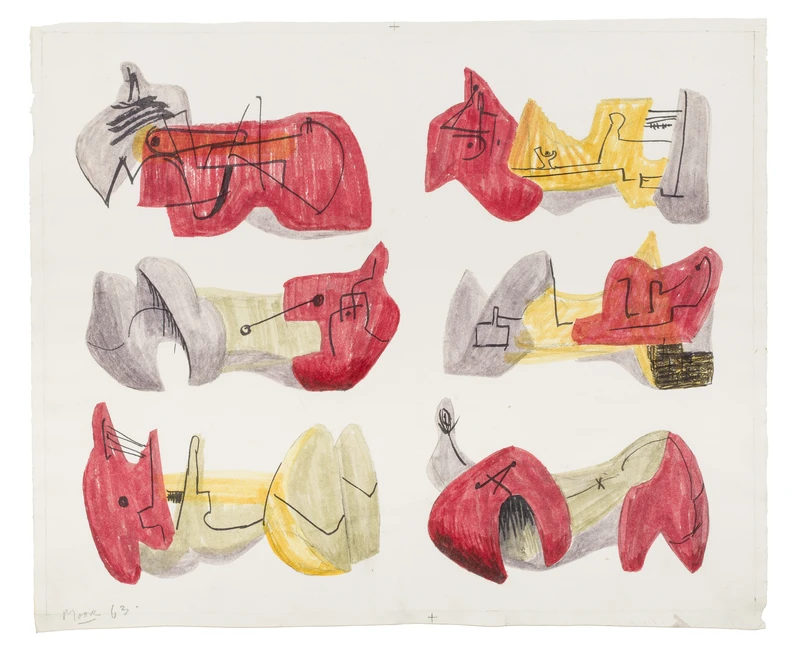Henry Moore in Colour
27 Jul-3 Nov 2024


Most know Henry Moore (1898-1986) as one of the most influential and innovative sculptors of the modern era. But he was also a remarkably talented and prolific drawer. Drawing provided Moore with a versatile tool, suitable to develop ideas for sculpture but also independently of it.
This exhibition presents a group of over 30 drawings by Henry Moore, animated by a striking vibrancy. From the life studies of his student days through to the casual drawings of his late years, these works reveal a deep appreciation of the unique characteristics and possibilities of colour in drawing, expressing a visual imagination that both integrates and enhances Moore’s three-dimensional practice.
Including examples of his best-known works - such as the Shelter drawings and the large ‘presentation’ works from the 1930s - alongside more informal and experimental pieces, the exhibition covers Moore’s entire career, casting new light onto this lesser known but enduring aspect of his art and showing how it could inform other areas of his work.
Visit here for the associated talk that accompanies the exhibition.